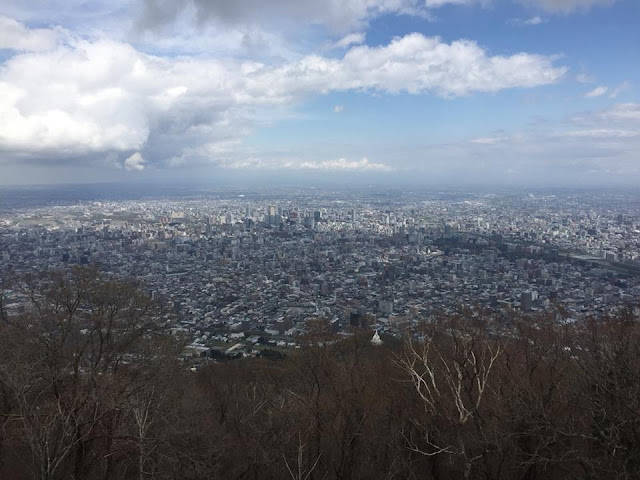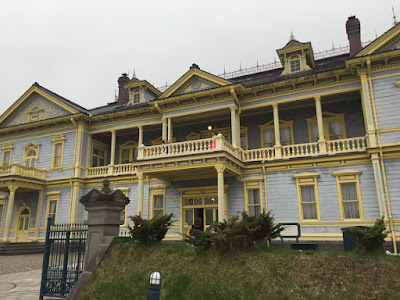Cup Noodles Museum and Ramen Museum
Japanese food is renowned for many things, but one aspect it is renowned for actually takes place behind the scene: the care and attention that its cooks and chefs put into the cuisine's preparation and presentation. This idea extends to two locations that celebrate two particular examples of Japanese cuisine: the Cup Noodles Museum and the Ramen Museum. Both places have prepared and presented an interactive (former) and immersive (latter) experience to celebrate two well-known examples of Japanese food.
The Cup Noodles, located in Yokohama, is a slightly surreal experience. One might think there is something ironic or kitschy about a museum about instant noodles, but my impression is that museum's intention is earnest and that the Japanese are immensely proud of their invention. In fact, the Japanese voted it as their best invention of the 20th century (though it's worth mentioning that the poll was non-scientific).
We started our time at the Cup Noodles Museum by making our own custom instant noodles cup. First, they sent us to a table in order to color our cup with markers. Then, we took the cup to an area where we pick our ingredients. I chose curry powder base with kimchi, pork, cheese, and green onions. Then, we witnessed the packaging process first hand: they sealed it and dehydrated it and then gave it to us to put it in an inflatable protective bubble like you see below:


After that, we went watched a video detailing the story of the founder of instant noodles. It was a classic from rags to riches story. The founder, Momofuku Ando, didn't successfully create instant noodles until he was 48 years old. The rest of the actual "museum" part had various artifacts, such as a recreation of the Momofuku's kitchen where he invented instant noodles. It also had various art installations that symbolized the adage "if you work hard, you can achieve your dreams".
Before we left the museum, we went to the top floor which was the restaurant area. You could order different noodle dishes from around the world: China, Malaysia, Kazakhstan, Indonesia, Italy, and a few others. You could order "mini" versions so that you could sample several kinds.
The Ramen Museum was very similar to the top floor of the Cup Noodles Museum. When you first walk into the museum, you will see an area that details some of the history of ramen and the different styles of ramen. For some reason, there is also a slot-car race track there - perhaps to entertain the children. The Ramen Museum, located in Shin Yokohama, was designed to look like 1940s/1950s Tokyo. When you walk downstairs into the museum, it appears like you're actually outside in an urban neighborhood from that time period. Each little shop in the Ramen Museum is a satellite location of 1 of 10 hand-picked ramen restaurants from around Japan, although there were a couple international ones as well (one from Brooklyn and one from Germany). The shops rotate in and out, so if you go once every few months, chances are you will see different shops.
I went on a particularly busy day, I'm guessing in part because it was a rainy day. There were lines for every shop, but some had shorter lines than others. Just like the top floor of the Cup Noodles Museum, you could order "mini" versions of the ramen bowls. Every bowl was excellent, but my favorite was a spicy (very rare in Japan!) tonkatsu ramen bowl. I think it's best to go to Ramen Noodles with a friend because you will probably spending a lot of time in line! However, it's all worth it in the end.


The Cup Noodles, located in Yokohama, is a slightly surreal experience. One might think there is something ironic or kitschy about a museum about instant noodles, but my impression is that museum's intention is earnest and that the Japanese are immensely proud of their invention. In fact, the Japanese voted it as their best invention of the 20th century (though it's worth mentioning that the poll was non-scientific).
We started our time at the Cup Noodles Museum by making our own custom instant noodles cup. First, they sent us to a table in order to color our cup with markers. Then, we took the cup to an area where we pick our ingredients. I chose curry powder base with kimchi, pork, cheese, and green onions. Then, we witnessed the packaging process first hand: they sealed it and dehydrated it and then gave it to us to put it in an inflatable protective bubble like you see below:


After that, we went watched a video detailing the story of the founder of instant noodles. It was a classic from rags to riches story. The founder, Momofuku Ando, didn't successfully create instant noodles until he was 48 years old. The rest of the actual "museum" part had various artifacts, such as a recreation of the Momofuku's kitchen where he invented instant noodles. It also had various art installations that symbolized the adage "if you work hard, you can achieve your dreams".
Before we left the museum, we went to the top floor which was the restaurant area. You could order different noodle dishes from around the world: China, Malaysia, Kazakhstan, Indonesia, Italy, and a few others. You could order "mini" versions so that you could sample several kinds.
The Ramen Museum was very similar to the top floor of the Cup Noodles Museum. When you first walk into the museum, you will see an area that details some of the history of ramen and the different styles of ramen. For some reason, there is also a slot-car race track there - perhaps to entertain the children. The Ramen Museum, located in Shin Yokohama, was designed to look like 1940s/1950s Tokyo. When you walk downstairs into the museum, it appears like you're actually outside in an urban neighborhood from that time period. Each little shop in the Ramen Museum is a satellite location of 1 of 10 hand-picked ramen restaurants from around Japan, although there were a couple international ones as well (one from Brooklyn and one from Germany). The shops rotate in and out, so if you go once every few months, chances are you will see different shops.
I went on a particularly busy day, I'm guessing in part because it was a rainy day. There were lines for every shop, but some had shorter lines than others. Just like the top floor of the Cup Noodles Museum, you could order "mini" versions of the ramen bowls. Every bowl was excellent, but my favorite was a spicy (very rare in Japan!) tonkatsu ramen bowl. I think it's best to go to Ramen Noodles with a friend because you will probably spending a lot of time in line! However, it's all worth it in the end.





Comments
Post a Comment